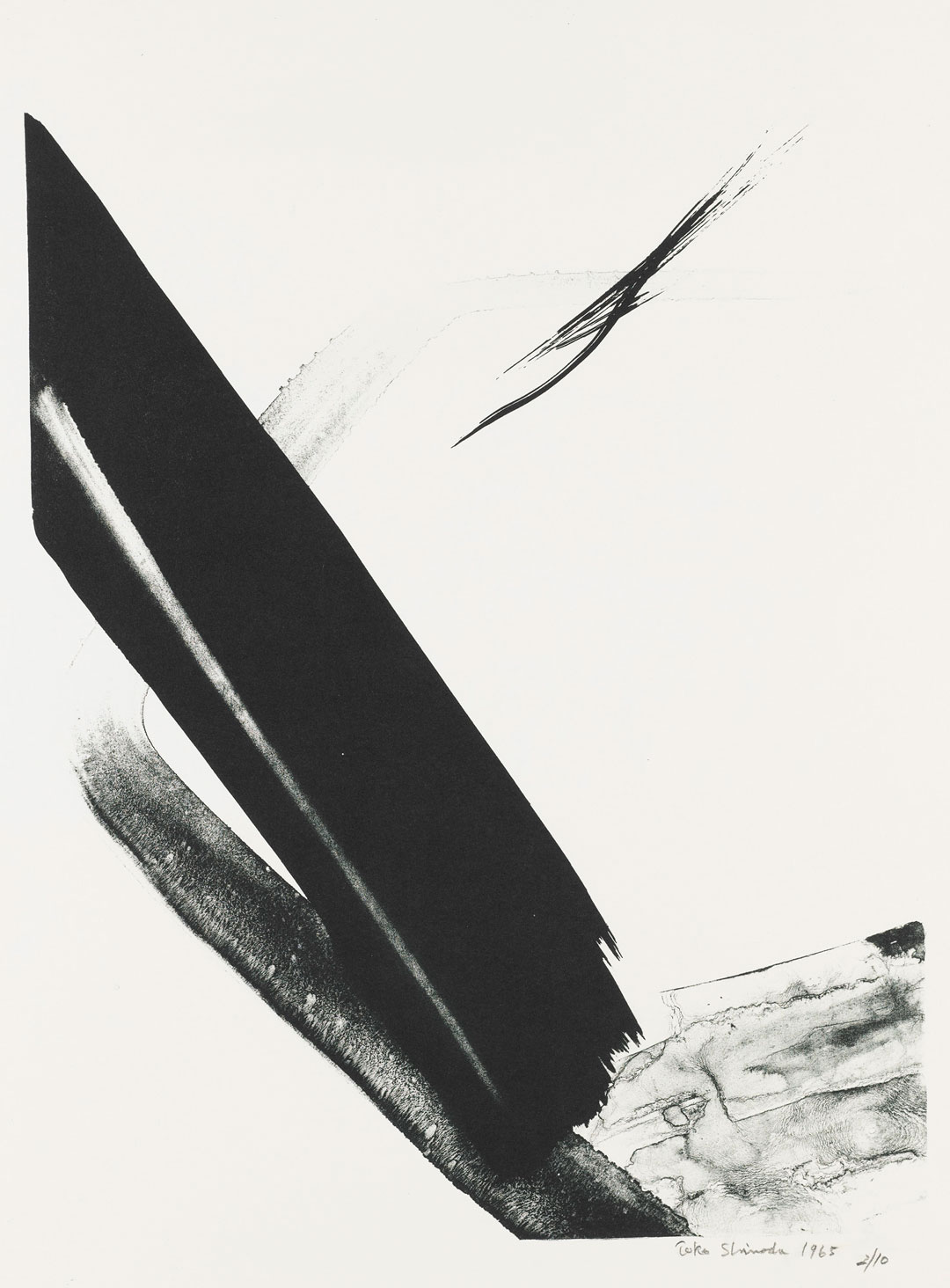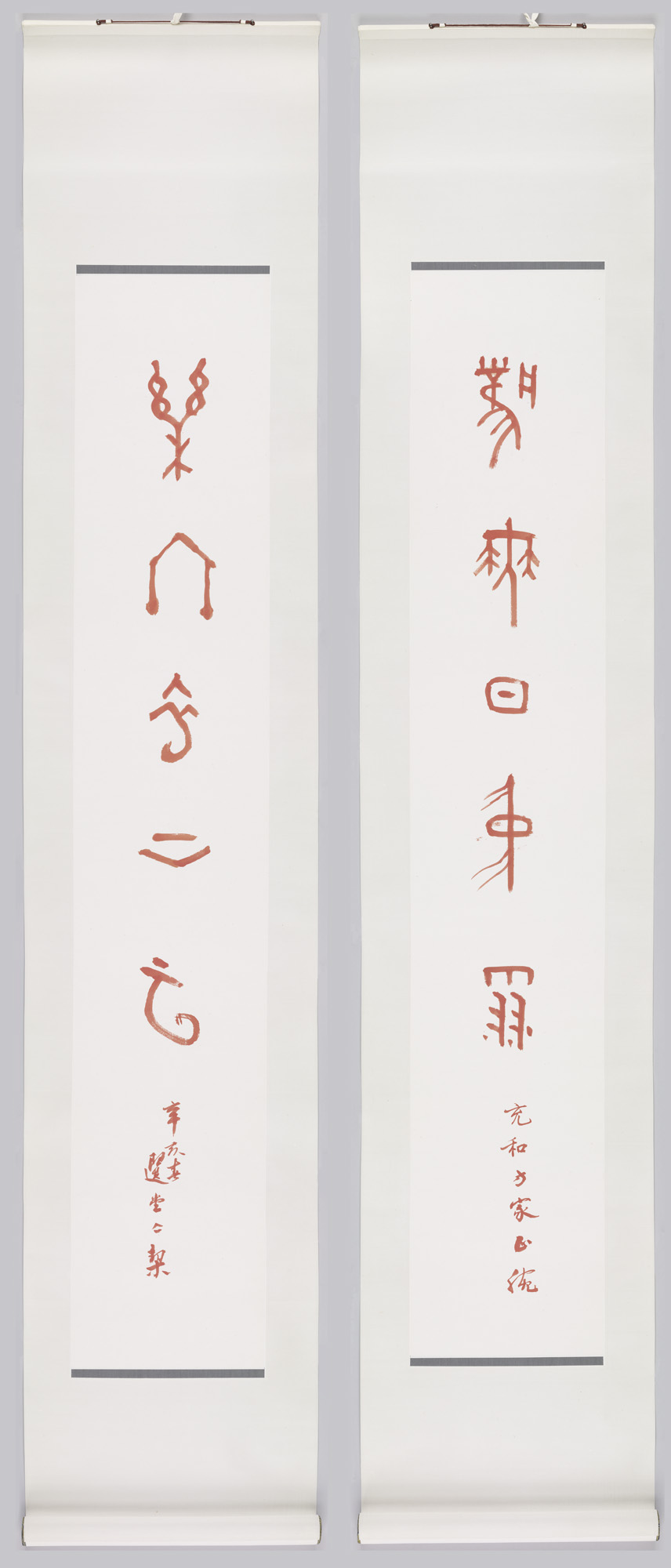Object of the Week: Untitled
In honor of Women’s History Month, Object of the Week will highlight works by celebrated women artists in SAM’s permanent collection throughout the month of March.
Broad black strokes cut across paper, precise sweeps of motion that hold bold strength. Ink trails downward in sharp ribbons dissolving into mist, which run down into watery pools. The shape is abstract, yet gives a sense of dynamism and flow that fully utilizes the monochromatic black that it’s painted in. This piece, left untitled by abstract artist and calligrapher Toko Shinoda, is not intended to have specific form. Instead it seeks to capture a feeling, although what that feeling may be, we’ll never know for certain. Each piece of art she makes is a piece of herself, and each is made meticulously to reflect the “her” that painted it.
At around 107 years old, Shinoda has had a lot of “her” to paint. The daughter of a calligrapher herself, Shinoda has been using a brush and sumi ink since she was six, and has not stopped using them since. For the first 40 years of her life, she focused on calligraphy; an art form traditional to Japanese women, as well as one of few career paths initially open to them. She was extremely successful and exhibited her works all over Japan. The more Shinoda created, the more abstract her pieces became. This resulted in a shift toward Abstract Expressionist art after an exhibition in New York in 1953. Having spent so much of her career trying to strictly copy the work of master calligraphers, she was impressed by the formal freedom of American artists. Abstract Expressionism, she felt, was what she really wanted to achieve with her ink.
Since then, Shinoda has gained international acclaim for her prolific melding of traditional and modern approaches. However, despite her fame, she denies all awards and recognition. Time magazine might write about her, museums may acquire her work and display them in a place of high regard, but she will not take any titles or cash gifts for her accomplishments. The only honor she has accepted is a set of stamps: hers are the first artworks by a living artist to be featured on official Japanese stamps.
Even now, Shinoda paints every day to keep her art, and herself, alive. It is said that all artists go through a process called 守破離 (shu-ha-ri) in their lifetimes. The “shu” being adherence to art form and tradition, the “ha” being a departure from it. Shinoda embodies the final step, “ri”: transcendence through focus and mastery that allows for creative freedom. Still, even though Shinoda is free in her creation, she refuses to be satisfied by the style she developed, and strives to master delicacy in her work. Discontented with safety in art, she will always paint things that require precise balance, capturing that fleeting moment of experience and self.
– Kennedy Simpson, SAM Blakemore Intern for Japanese and Korean Art

